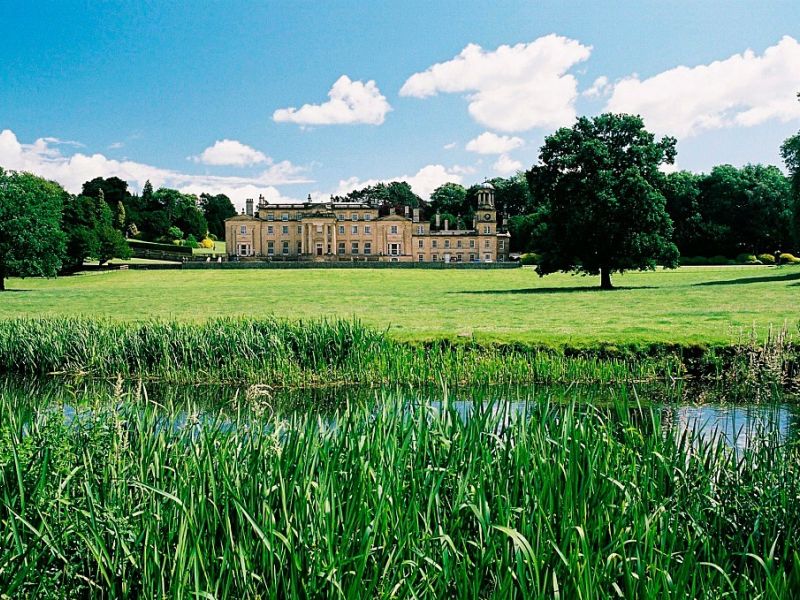Discover the locations of The English Game

For those missing their weekly sports fix, Netflix has the answer. New to the platform as an original series, The English Game from Downton Abbey creator Julian Fellowes explores the history of football and the origins of the beautiful game. It takes viewers back to the second half of the 1800s, when the game of football – or Association Football as it was known then – came into fruition, crossing class divides in the process.
Football was played throughout the early 19th century, but it wasn’t quite football as we know it today. Many different sets of rules existed and it wasn’t until a set of clubs met at the Freemasons Tavern in Covent Garden, London – now the Freemasons Arms – in 1863 that the Football Association was born. Over the course of six meetings, new rules were agreed, although they were not to everyone’s tastes, as many clubs instead opted to form the Rugby Football Union in 1871.
For 20 years after the formation of the Football Association, several championships continued to operate without a uniform set of regulations. However, in 1886, the International Football Association Board (IFAB) was founded to help formalise the rules, sanctioning 17 basic laws for the game of football. The English Game focuses on this period when the sport is still in its infancy and dominated by upper-class teams.
The facts behind the TV series
Did what you see in the TV series The English Game really happen? Several of the main characters, including both Arthur Kinnaird and Fergus Suter, existed and held their respective roles in real life. However, there is a degree of creative licence around how the story is told.
The English Game also looks at England from a social perspective, at a time when class divides were widespread. Upper class teams, many from colleges in the south where wealth and politics were prevalent, dominated the FA Cup in its early years – Old Etonians, who feature in the series, reached the final on no less than six occasions in nine years.
Meanwhile, football was incredibly popular among the working classes in the north of England, where manufacturing was prevalent. Numerous mills and textile companies had their own teams, many of which would go on to take their places in the first football leagues. The clashes being played out on the football pitch were therefore representative of wider society too.
Where was The English Game filmed?
A number of recognisable locations in Lancashire, Liverpool, Greater Manchester and Yorkshire were used to emulate Victorian England in The English Game.
The main story in the series focuses on the quaint market town of Darwen, in Lancashire. However, the UNESCO heritage village of Saltaire, in Shipley, was used for filming, and it is widely viewed as a leading example of the industrial villages that existed during Victorian times. Located near Bradford and named after Sir Titus Salt who built a textile mill there, it’s packed with Italianate architecture and charm.
Yorkshire’s Broughton Hall, near Skipton, appears prominently throughout the series, surrounded by beautiful English countryside. The neoclassical Grade I-listed country manor house and its spectacular grounds have also featured in Wuthering Heights, starring Ralph Fiennes, Calendar Girls and Gentleman Jack.
The Edwardian Grade II-listed houses of Liverpool’s Georgian Quarter doubled up as Mayfair in London for the show, while several other streets in the centre of the city also stood in for parts of the capital. The impressive interior of Croxteth Hall, on the outskirts of Liverpool, was used in The English Game to transport viewers back to the FA’s Headquarters in London in the 1880s.
Of course there cannot be a series about football without a football pitch, and The English Game features several different locations. Notably, the 1883 FA Cup final was played at London’s Kennington Oval, although filming of it for The English Game took place in the lush green surroundings of Stamford Park, in Altrincham, Greater Manchester. The Grade II-listed Park is widely recognised as being one of the first public parks to be designed for sport, while The Oval is known more for its cricketing connections, as it’s been the home of Surrey County Cricket Club for 175 years.
Eton College in Berkshire, the home of the Old Etonians – a team comprised of alumni from the prestigious private school – also appears in The English Game. The match between them and Darwen is played out with the spectacular college chapel providing the backdrop.

